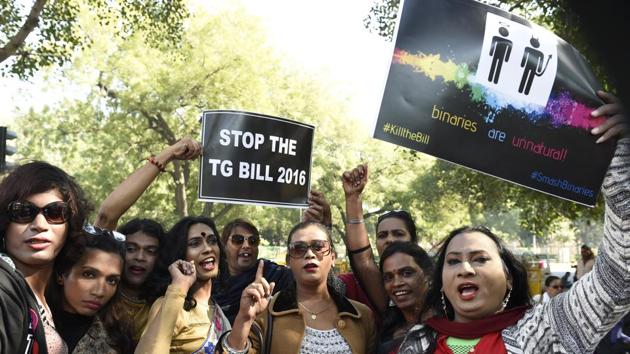The Transgender Persons Bill sends out a message of subordination and exclusion
The bill makes the recognition of transgender identity conditional upon a certificate issued by a district magistrate and the recommendations of a “screening committee”. What if you had to come before a medical officer to prove that you were actually a man or a woman, before society recognised you as such?
In his last speech to the Constituent Assembly, B.R. Ambedkar called upon the newly-born Indian nation to hold fast to the value of fraternity, without which “equality and liberty will be no deeper than coats of paint.” Ambedkar’s idea of fraternity – “a common brotherhood of all Indians” that would overcome “separation in social life” – was taken up many decades later by the Delhi High Court, in 2009. In its judgment decriminalising homosexuality, the Court noted that “if there is one... tenet that can be said to be underlying theme of the Indian Constitution, it is that of ‘inclusiveness’... the inclusiveness that Indian society traditionally displayed, literally in every aspect of life, is manifest in recognising a role in society for everyone.” And four years after that, the Supreme Court took up the baton when it recognised that transgender persons in India had been subjected to a history of oppression and violence, and affirmed their constitutional rights to equality, dignity, freedom of expression, non-discrimination and reparative justice.

But if the arc of history bends towards justice, then the government’s proposed Transgender Persons Bill, due to be introduced this winter session in Parliament – ostensibly to recognise and protect the rights of the transgender community – looks like an unwanted detour that bends elsewhere. Far from the Constitutional promise of pluralism, and of accepting every Indian on their own terms as part of “a common brotherhood”, the trans bill sends out a message of subordination and exclusion to the very community that it seeks to emancipate.
Among the more glaring flaws with the trans bill are the following. First, it defines a transgender person as someone who is “neither wholly female nor wholly male”, “a combination of female and male” or “neither female nor male.” Instead of taking transgender persons on their own terms, the bill instead defines them in terms of what they are not – i.e., female or male. But to define a person only in terms of what they are not is to deny them self-expression. It is like forcing a Parsi to identify themselves as “neither Hindu nor Muslim”, or a Punjabi speaker to identify themselves as “neither Hindi nor English-speaking.” The trans bill, thus, denies inclusion by forcing the transgender community into the iron cage of the male/female binary. But, as Indian history shows, gender fluidity in our culture went far beyond the closed confines of “male” and “female”, including (as the Trans community has itself pointed out) “socio-cultural identities” like “kinnars, hijras, aravanis [and] jogtas.” And not just in India: the First Nations people in the Americas, for instance, recognised as many as five genders, without privileging any one over the other: “female, male, two spirit female, two spirit male and transgendered.”
Second, the trans bill makes the recognition of transgender identity conditional upon a certificate issued by a district magistrate and the recommendations of a “screening committee” that consists, among others, of a medical officer and a psychiatrist. Not only does this recall the outmoded theory that gender identity is a medical condition, but it also sends a message to the transgender community that if you want to be accepted into Indian society on your own terms, you must first prove it to our satisfaction. Once again, how demeaning this is can be understood by reversing the situation: what if you – the reader – had to come before a medical officer to prove that you were actually a man or a woman, before society recognised you as such? A Constitution and a society that celebrates pluralism must accept identities on their own terms, and not impose upon them in the language and vocabulary of the dominant culture.
There are other problems with the trans bill – such as the absence of affirmative action, and the criminalisation of begging without an alternative – that have been identified and critiqued by the transgender community, and at the very least, the government can make a start by listening to the voices of the very people that it claims it wants to help. At its heart, however, the problem is this: our history of social violence against certain groups and communities has been conditioned not simply by active prejudice, but by unconscious ways of thinking and the structures of our language. Until the law makes an active effort to engage with – and ultimately dismantle – these structures, justice will remain an illusion. With the trans bill, we have a great opportunity to take a step towards Ambedkar’s dream of constitutional fraternity. Let us not squander it.
Gautam Bhatia is an advocate in the Supreme Court
The views expressed are personal





